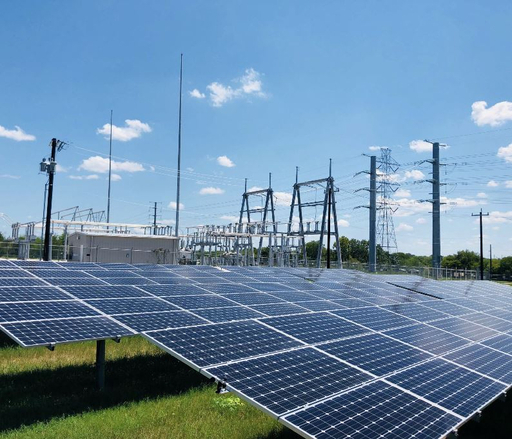


The demand for solar installations in the United States is on the rise, bringing the industry back to life. With the Inflation Reduction Act (IRA) incentives and increased demand working in tandem, there is growing optimism for a rise in installation volumes this year. As a result, domestic solar companies are accelerating their efforts to target the U.S. market, aiming for a rebound.
According to industry reports on the 17th, the total solar installation capacity in the U.S. last year reached 50GW (gigawatts), marking a 21% increase compared to the previous year. Notably, the installation volume in the fourth quarter reached 18.8GW, a 32% increase year-over-year. This growth is believed to be driven by the tax credit benefits provided by the IRA.
On the other hand, the China Photovoltaic Industry Association has forecast that domestic solar installation demand in China will be between 215 and 255GW this year, a slowdown compared to last year's 278GW. This is due to the Chinese National Development and Reform Commission's announcement of a reduction in subsidies for renewable energy projects, which is expected to lead to a decline in demand. Solar cell and module manufacturers in China are expected to face a contraction in the domestic market, with industry restructuring anticipated.
As a result, supply excess in the U.S. is expected to ease, leading to a rebound in raw material and product prices, and a growing demand for Korean products in the U.S. market. In this context, the external environment surrounding South Korea's solar industry is expected to improve positively. Domestic companies are actively seeking business opportunities, including speeding up the establishment of production bases in the U.S.
In particular, about 90% of Hanwha Solutions' solar business production and sales come from the United States, and with the recent improvement in U.S. solar supply and demand, growth expectations are rising. Hanwha Solutions holds the number one market share in the U.S. residential solar market at 31%, and this market dominance is expected to be an additional factor for further benefits.
Moreover, Hanwha Solutions' operation of the TPO (Third-Party Ownership) business, which involves installing distributed solar systems in homes for rental and capturing investment tax credits (ITC) and bonus benefits, is another element that could enhance profitability. While solar installations in typical residential homes are not as common in South Korea, the trend of increasing residential solar installations in the U.S. suggests that the impact of this business will grow significantly.
OCI Holdings is also expected to benefit positively as it accelerates its vertical integration in the U.S. solar industry. OCI Holdings' U.S. subsidiary, OCI Energy, has signed a joint venture agreement with Israeli solar company Arava Power for a 260MW-scale SolarRoper project. The SolarRoper project is a large solar power plant being developed on a 2.1 million square meter site in Wharton County, south of Houston, Texas. Through this, the project will benefit from a 30% tax credit under the IRA (Inflation Reduction Act), with an additional 10% energy community bonus, allowing for a maximum reimbursement of up to 40% of the investment.
An industry insider commented, "As the U.S. intensifies its sanctions on Chinese products, there is a high possibility that South Korean products will gain competitiveness in the U.S. market. However, there is also the possibility that the Trump administration will reconsider the CHIPS Act (Semiconductor Support Act), potentially reducing investment subsidies, and since solar module wafers are included in semiconductor wafers, we need to closely monitor the potential impact on the industry."
ChatGPT를 사용하여 번역한 기사입니다.


 Copyright ⓒ 메트로신문 & metroseoul.co.kr
Copyright ⓒ 메트로신문 & metroseoul.co.kr
Copyright ⓒ Metro. All rights reserved. (주)메트로미디어의 모든 기사 또는 컨텐츠에 대한 무단 전재ㆍ복사ㆍ배포를 금합니다.
주식회사 메트로미디어 · 서울특별시 종로구 자하문로17길 18 ㅣ Tel : 02. 721. 9800 / Fax : 02. 730. 2882
문의메일 : webmaster@metroseoul.co.kr ㅣ 대표이사 · 발행인 · 편집인 : 이장규 ㅣ 신문사업 등록번호 : 서울, 가00206
인터넷신문 등록번호 : 서울, 아02546 ㅣ 등록일 : 2013년 3월 20일 ㅣ 제호 : 메트로신문
사업자등록번호 : 242-88-00131 ISSN : 2635-9219 ㅣ 청소년 보호책임자 및 고충처리인 : 안대성